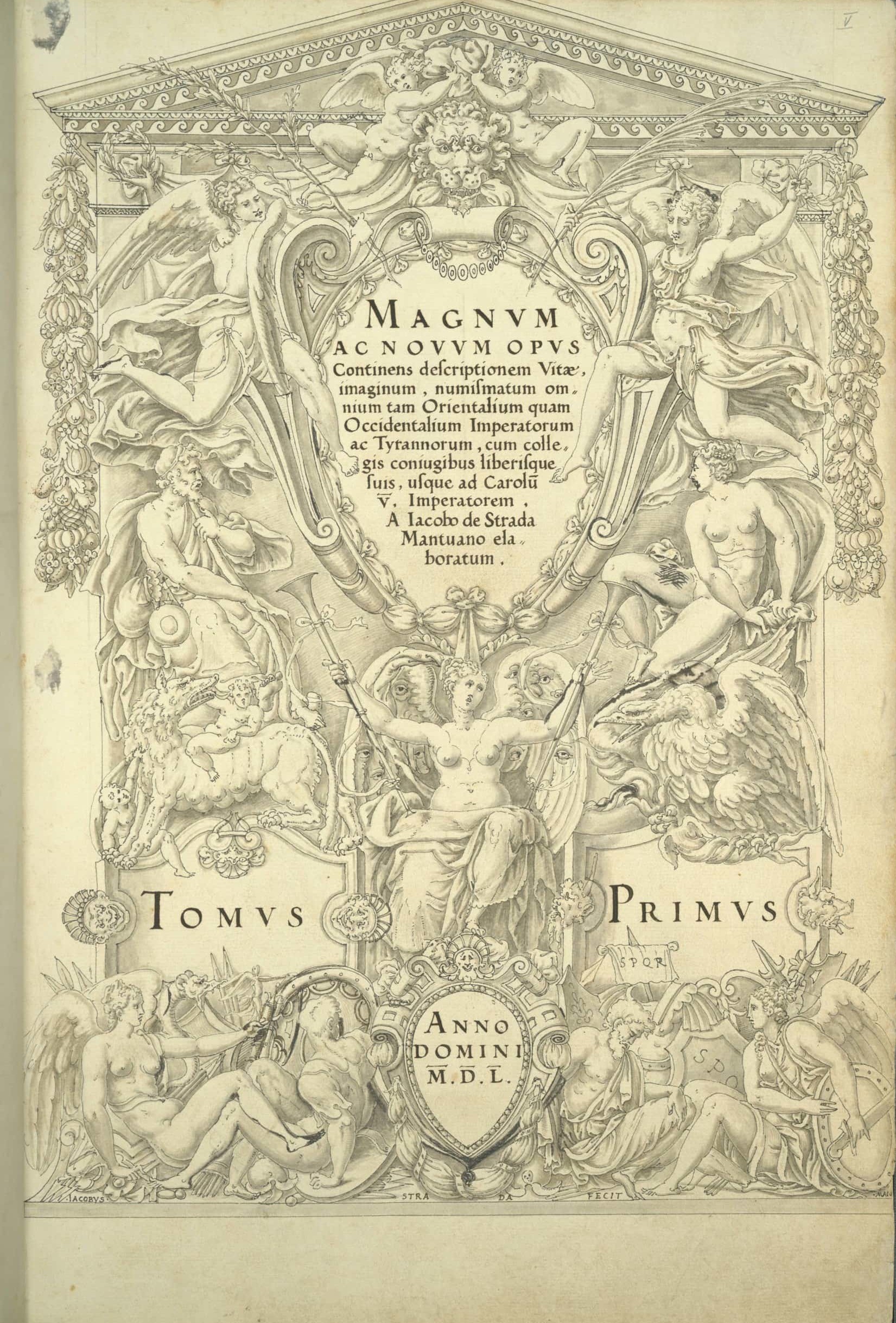Strada’s Magnum ac Novum Opus
DFG-Project, Jacopo Strada’s Magnum ac Novum Opus: A Sixteenth-Century Numismatic Corpus
Duration: 2015–2022
When the Swedes plundered the art collection of the Duke of Bavaria in Munich during the Thirty Years’ War, the most famous object they acquired was the corpus of numismatic drawings by Jacopo Strada, Magnum ac Novum Opus continens descriptionem vitae, imaginum, numismatum omnium tam Orientalium quam Occidentalium Imperatorum ac Tyrannorum, cum collegis ac coniugibus liberisque suis, usque ad Carolum V. Imperatorem. The 30 volumes of largely imperial coins eventually ended up in the library of Duke Ernst the Pious of Saxe-Gotha-Altenburg, today’s Gotha Research Library (Chart. A 2175, 1–14, 16–30). Strada probably received a ducat for each of the approximately 8,500 drawings, executed in pen and ink on folio. They had been commissioned from him by his first patron, Hans Jakob Fugger. Duke Albrecht V of Bavaria later acquired the loose sheets, together with Fugger’s library and collection. He had them magnificently bound in red leather and had the covers decorated with his portrait and coat of arms. Although this coin corpus was highly valued in its own day, it has not yet been studied in great detail. The reasons for this lie in the growth of scientific numismatic research at the end of the 18th century. Since the corpus did not meet the standards of this type of research, its perceived value declined. Duke Albrecht did not acquire Strada’s coin descriptions, which, according to Strada, were meant to go together with the coin drawings. They are a separate work, which has survived in two copies in Vienna and Prague, entitled A[ureorum] A[rgenteorum] A[ereorum] NumismatΩn Antiquorum ΔΙΑΣΚΕΥΕ. Therefore, the descriptions were never compared with the volumes of drawings. These eleven volumes contain structured and methodical descriptions, annotations and indications of the locations where Strada claims to have seen the coins. This allows for a close examination of Strada’s interpretations of the coins, which in turn opens up the possibility of studying the approach of antiquarians of the time in detail. The most important prerequisite for these comparative studies was the digitisation of drawings and texts in order to be able to compare them. The coins and descriptions, if an antique original can be identified as a model, are being entered into the database of the Census of Antique Works of Art and Architecture known in the Renaissance. The coin descriptions will also be entered into the database ‘Translatio Nummorum’ (KHI Florence) in order to make the text and the coin drawings not associated with an antique original accessible. As a result of the project, a digital edition of the drawings of Strada’s Magnum ac novum opus and the accompanying descriptions of the A[ureorum] A[rgenteorum] A[ereorum] NumismatΩn Antiquorum ΔΙΑΣΚΕΥΕ will be produced, which will be accessible via the databases of the Census and the KHI in Florence.
In 2022, a monograph by Volker Heenes and Dirk Jacob Jansen was published by Michael Imhof Verlag under the title Magnum ac novum opus. A Sixteenth Century Corpus of Ancient Numismatics. It presents and comments on selected drawings by Strada together with the corresponding coin descriptions. The publication also includes a condition report of the material, information on its provenance, and a reconstruction of the sequence of the coin drawings as originally planned by Strada. In addition, the Magnum ac novum opus is situated within the history of numismatic scholarship and the broader context of antiquarian studies in the sixteenth century. The appendix contains a selection of transcriptions and translations of the most important passages of text.

Contact
Project head
Prof. Dr. Martin Mulsow
+49 361 737‑1700
martin.mulsow(at)uni-erfurt.de
Senior researchers
Dr. Volker Heenes
+49 361 737‑1732
volker.heenes(at)uni-erfurt.de
Dr. Dirk Jacob Jansen
+49 361 737‑1731
dirk_jacob.jansen(at)uni-erfurt.de
Project Partners
Forschungsbibliothek Gotha , Census of Antique Works of Art and Architecture Known in the Renaissance